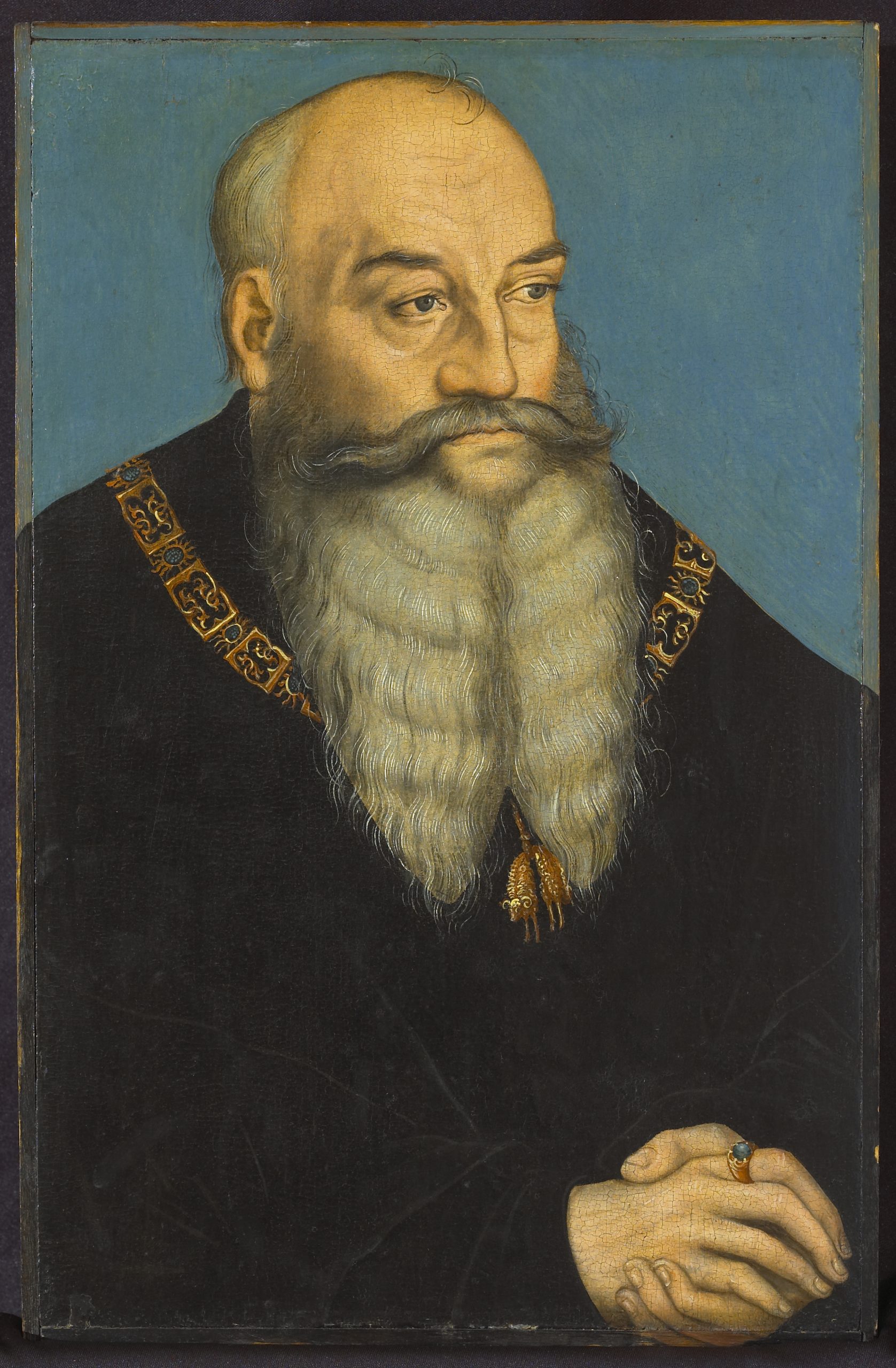When the German-Jewish couple Henry and Hertha Bromberg fled the Nazis in 1938, they had no choice but to sell their art collection. They were desperate to reach safety and used the sales to finance their passage to France, Switzerland and finally the USA.
Over the past decade, the couple’s descendants have tried to address the injustice by reaching out to institutions that own Bromberg art, and the latest agreement calls for the Allentown Art Museum in Pennsylvania to return his art. Portrait of George the Bearded, Duke of Saxonyby Lucas Cranach the Elder and his workshop, at Christie’s Old Masters auction, to be held in New York in January.
The painting was created around 1534 by the court painter of the Northern Renaissance and shows a pensive Duke of Saxony in a dark robe and wearing the chain of the Order of the Golden Fleece. It is a masterful example of Cranach’s mannered portraits of the Saxon royal family. The proceeds from the sale will be divided between the museum and the Bromberg heirs.
This decision – as opposed to a full refund – was described by the museum as a compromise between its fiduciary duties and its commitment to upholding the highest standards of ethical responsibility.
After receiving the claim from Bromberg’s heirs in July 2022, the museum began researching the painting’s provenance with an outside attorney experienced in the restitution of artworks. While both parties agree that the Cranach was sold under duress when the Brombergs fled Nazi Germany, they disagree on the timing. Bromberg’s descendants believe the painting was sold before the couple left Germany, and the museum’s research suggests it happened later.
“The historical record suggests that the painting was neither confiscated by the Nazi regime nor forcibly sold at auction,” museum president Max Weintraub said by email. “Instead, the painting is more likely to be considered part of a new concept known as ‘fugitive property’: property sold en route while fleeing persecution.”

Henrietta Schubert, Audrey Azoulay and Christopher Bromberg at the return of the painting Portrait of a man by Joos Van Cleve, in Paris on November 28, 2016. Photo courtesy of Francois Guillot/AFP/Getty Images.
According to the museum, the painting was sold by the Brombergs to the F. Kleinberger Gallery in Paris before being acquired by the Pennsylvania institution through a New York gallery in 1961. Weintraub described the agreement as an “amicable solution.”
Christie’s, which did not respond to a request for comment, has not yet set a value for the painting ahead of the auction. The highest price ever achieved for a painting attributed to Lucas Cranach the Elder and his workshop was “The Penitent Saint Jerome,” which sold for $1.1 million at the Fischer Auctions gallery in Lucerne. At Christie’s Old Masters auction last year, a portrait by the artist of Henry IV, Duke of Saxony, sold for $352,800.
The Bromberg family’s descendants are still searching for around 80 works that were lost during the escape from Nazi Germany. In 2016, a painting attributed to the 16th-century artist Joos van Cleve was returned by the French Ministry of Culture. This was followed in 2018 by three paintings by the 16th-century Flemish artist Joachim Patinir.
Follow Artnet News on Facebook:
Want to stay up to date in the art world? Subscribe to our newsletter and receive breaking news, insightful interviews and astute critical views that drive the discussion forward.



